From E. A. Darwin [19 June 1858]1
diagram of your basin if I have understood it rightly, & marked the distances on it.2 A section passing thro. AF would be an equilateral ▵ and a little bit higher an irregular hexagon
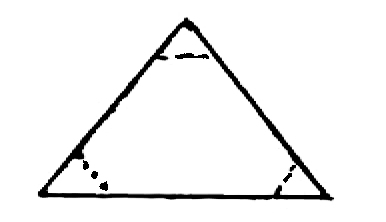 with the alternate sides longer and at E it would become a regular hexagon.
with the alternate sides longer and at E it would become a regular hexagon.
I dont think it is possible to draw the intersections of spheres in a simpler manner than the diagrams I return, they are all flat on the paper & real dimensions.3 If you have 3 spheres only intersecting the central one you will have
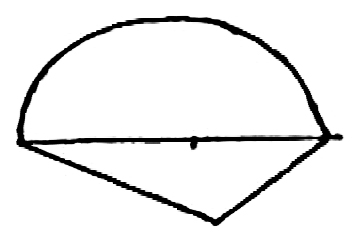 3 semicircles bounded by rhombs, but you cant draw them together with real dimensions as they are in different planes, & their projection would be 3 ellipses & 3 foreshortened rhombs.
3 semicircles bounded by rhombs, but you cant draw them together with real dimensions as they are in different planes, & their projection would be 3 ellipses & 3 foreshortened rhombs.
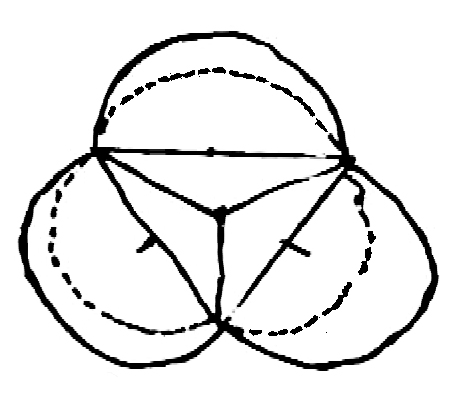
If you take a potato and slice it off at latitude 45o, you will have the circle of intersection of 2 spheres
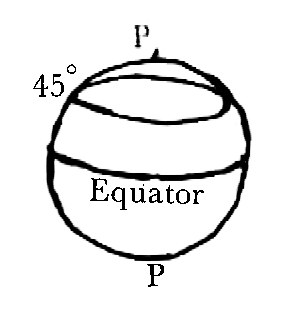
You have a deal of trouble before you with carriage & horses worse than Bees cells4
E D
[Enclosure 1]5
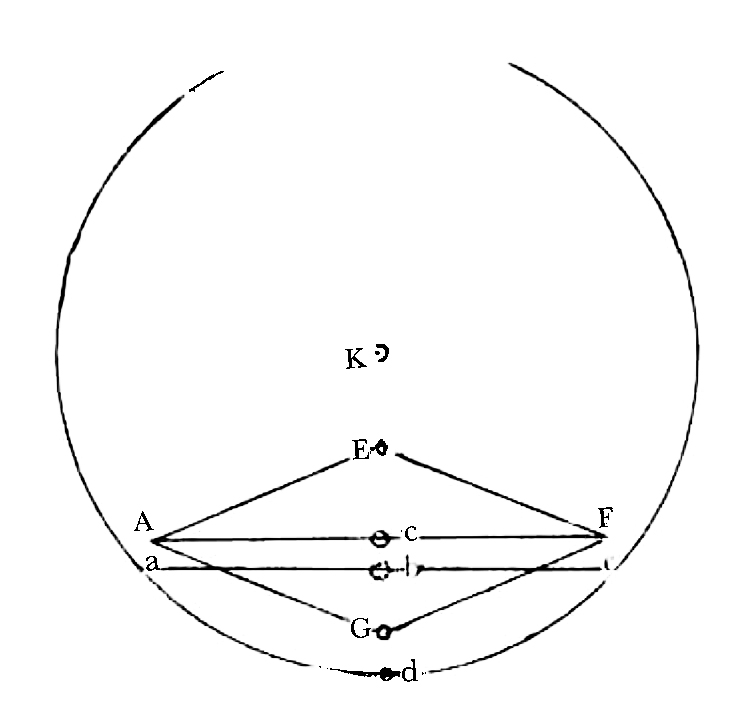
| Rhomb of Bees Dodec linear dimensions magnified 10 times | |
| a b c d | basin, bd = 0in.05 (real dimension |
| A E F G | Rhomb in position, AF or long diameter real dimensions |
| EG short diameter foreshortened | |
| cb or vertical heigth to plane of lower ∠s of rhomb = 0in.01474 in real dimensions | |
[Enclosure 2]6
I have drawn you several intersections separately in order not to confuse the drawing & you. I. Projection of ⊙ of intersection parallel to the paper. By way of practise in projections consider your eye to be in the center of one sphere looking at the center of other sphere, or rather looking along the line joining the centers of spheres then the large ⊙ is the projection of both spheres & the small ⊙, the projection of intersection half way. If the intersection plane is perpendicular to the paper then the figure to the right represents it. Or you may consider the circle of intersection to be a parallel of latitude 45o ii. Two spheres intersecting Then if the 2 circles are inclined to one another at 120o (∠ of hexagon) the figure will be the ⊙ EHF with part cut off by EF iii a row of spheres the centers all in the same plane IV. Two intersections the same as at iii. If they are inclined at 120o & a 3rd sphere intersecting them Imagine V to be so placed that A′ rests upon A, B′ upon B, C′ upon C, then the figure of V will be the semicircle C′GB′ bounded by the half rhomb C′A′B′.
Two other spheres with their centers in the same plane as V will cut off the 2 dotted sides of the rhomb The 3 plane ∠s, CAF, BAF & C′A′B′ form an obtuse ∠ of Dodec, & ABH, A′B′P, form 2 of the plane ∠s of the acute ∠ of Dodec the other 2 being formed by the adjacent spheres.
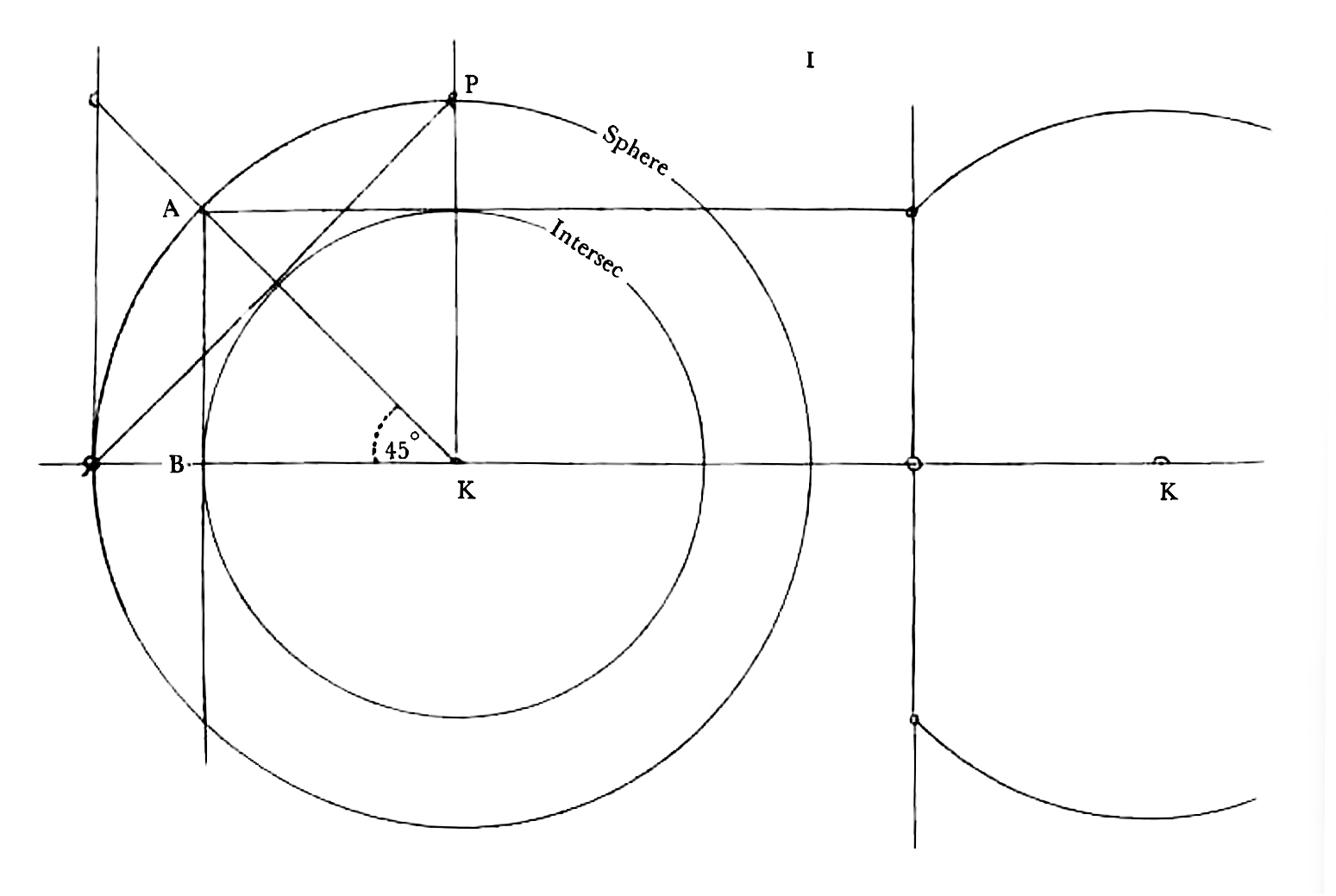
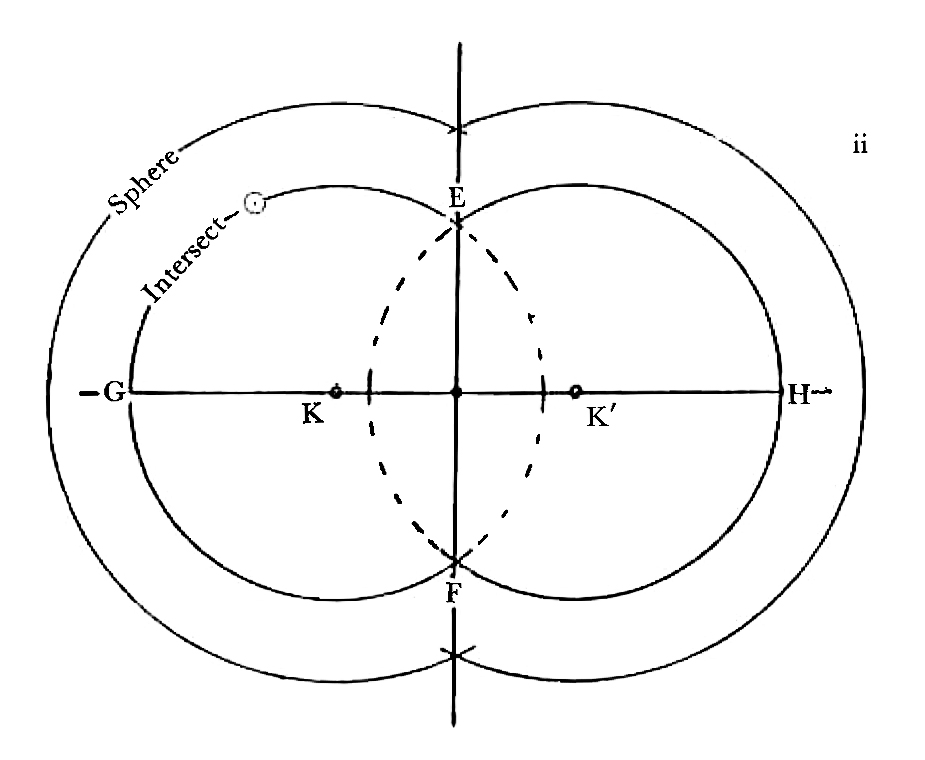
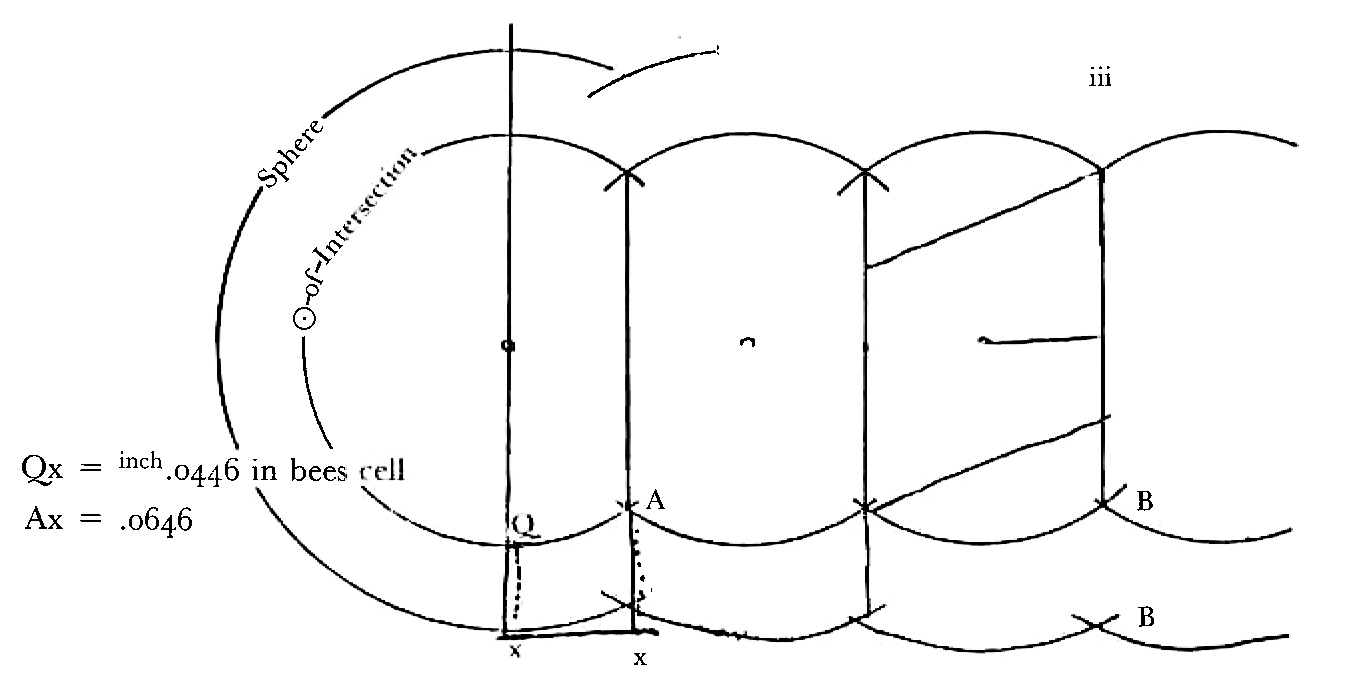
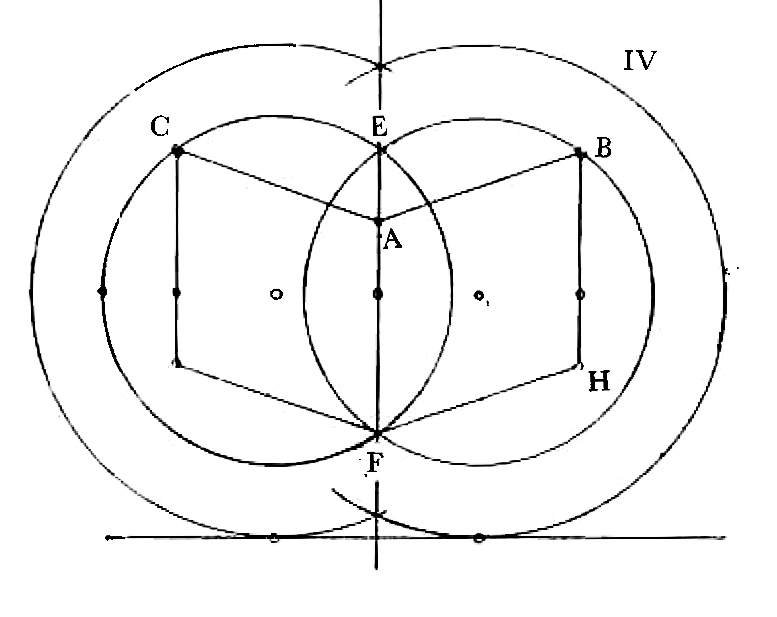
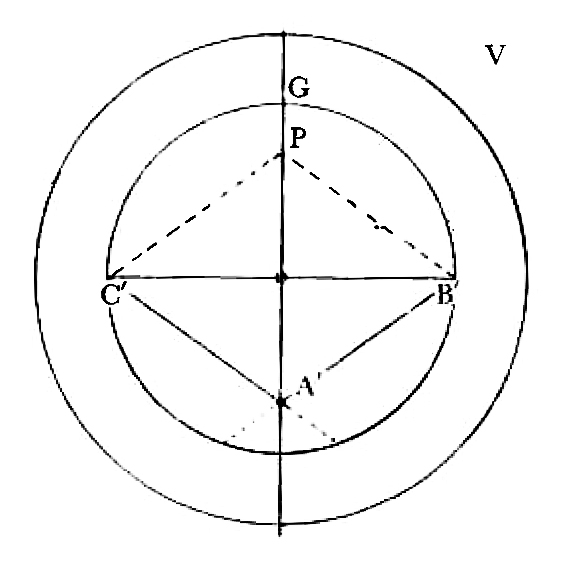
ED
CD annotations
Footnotes
Summary
Discusses geometry related to the structure of bees’ cells. Encloses notes and diagrams dealing with intersections of spheres.
Letter details
- Letter no.
- DCP-LETT-2287
- From
- Erasmus Alvey Darwin
- To
- Charles Robert Darwin
- Sent from
- unstated
- Source of text
- DAR 162: 51
- Physical description
- ALS 3pp, encl 9pp †
Please cite as
Darwin Correspondence Project, “Letter no. 2287,” accessed on 9 November 2024, https://www.darwinproject.ac.uk/letter/?docId=letters/DCP-LETT-2287.xml
Also published in The Correspondence of Charles Darwin, vol. 7


